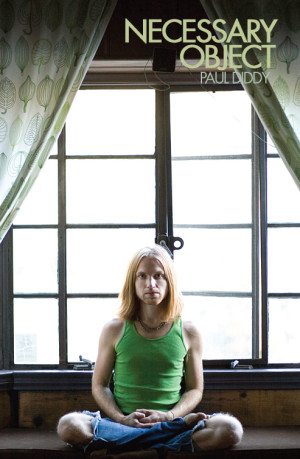
I met with Paul at his home in Echo Park; a pastoral hideaway atop a hill overlooking Downtown Los Angeles. After letting myself in through the gate, I found Paul on the porch, his back turned to me, painting tiny neon lines into an impossibly tangled ball of neon lines. The sound of classical jazz wafting out from a record player somewhere inside his home mixing with the buzz of insects and running bubbling water from a stone fountain beside him.
The peaceful setting washed over me at once and lasted long after our conversation was over. Paul himself seems to have the same effect on people as his work: one can’t help but be pleased, intrigued, comforted and surprised all at the same time.
Paul Diddy (born Paul Tyree-Francis) is an artist that not only uses his work as a means of expression, but as a vehicle to learn more about the world…to teach himself about history, science, nature and philosophy. He also pounces on any chance to experiment with new mediums. Paul explains, “With the realistic paintings (like a giant oil reproduction of a camera phone shot of Brittany spear’s bodyguard attacking someone), I know what it is going to be so I am more like a machine than an artist.” A great smile takes over his face, “When it’s abstract like this one (he motions toward the bright mess of tangled neon lines facing us), I have an idea and it creates itself as I discover what it means. Most of my work is hinging on discovery, and discovering what the work could be. It’s exciting that way. One has to be present with the object one is creating” The same holds true with the works Paul has created with audio, super 8 and collage.
Growing up, Paul was fascinated by exploration and discovery. He appends that this was before he learned that historically, explorers were actually out to conquer land, not knowledge. His ability to connect with that aspect of his youth is what makes his work fun yet layered. Paul intends to fill every object he creates with loads of information, even though the lay spectator might never notice a hint of meaning.
His art is a way for Paul to teach himself something new. If others notice the hidden conceptual details, that’s great, but not crucial. He studies for months about various subjects that strike his fancy. These topics include (among countless others) Existentialism, Astral projection, ancient religions and Symbology. The result is deeply saturated works that seem effortless, intelligent, fun, and complex all at the same time.
Paul’s collages are his most abundant and perhaps most prolific works. He has cabinets filled with collage materials collected over the years through varied serendipitous means; like a stack of old magazines he found in Berkeley that he still returns to and uses bits from. Paul states, “In collaging I find it important to remove the media from its context and let it stew there for a little bit along with all of the other images and let them relate to each other without my manipulation.”
The re-creation of the past is abundant in Paul’s collages; a holdover from his youthful fascination with cultural discovery. The collages depict scenes of vague historical importance often combined with images if the 1950’s nuclear family household but also include reverential religious scenes as well as ideas of the vastness of the cosmos and the human need to understand and relate it all. This may seem absurdly discontinuous but Paul’s impeccable eye for light sources and scale in the images he uses makes everything come together as if it were some bizarre snapshot.
Paul’s profound interest in religion comes from his discovery of spirituality beyond the Church that he grew up in. He smiles sheepishly and reveals “I went to Church twice a week until I was Seventeen and discovered Kerouac. He wrote this book on Buddhism and I got really into it and realized that they were saying the same thing as the Christian Church [I was in]. I wouldn’t say that I’m religious because that makes me think: fundamentalism, doctrine, and dogma. I tend to be aware of it, and process it and re-form it into these various mediums. It’s like meditating.”
He goes on, “Myself and other artists I know have often felt like a fountain for something else. It is important to be open. It’s not always clear to me what I’m trying to do and then it just comes to me. Sometimes the way I like to work is to create rules for myself-like a time limit-so that I can break those rules. It’s important to be able to break rules.” As for the use of so much 1950’s imagery, Paul confesses, that it has more to do with the printing process and paper quality that were used during that era that strike him as particularly interesting and beautiful.
“Collage is to me a venue for explaining an idea like a diorama, one with inherent sarcasm. I’m taking a modernist form and using it in a post-post-modern way.” Surprisingly, Paul has a distaste for the fact that art (in order to exist) must have a formal object, event or duration. Although he lovingly pains over his work he concedes, “It’s frustrating as an artist to not want to make anything and want everybody to just know what one is thinking and perceiving and feeling. But the necessity of the object remains.”
Images of Paul’s work as well as samples of his self-performed and produced music can be found at pauldiddy.com
